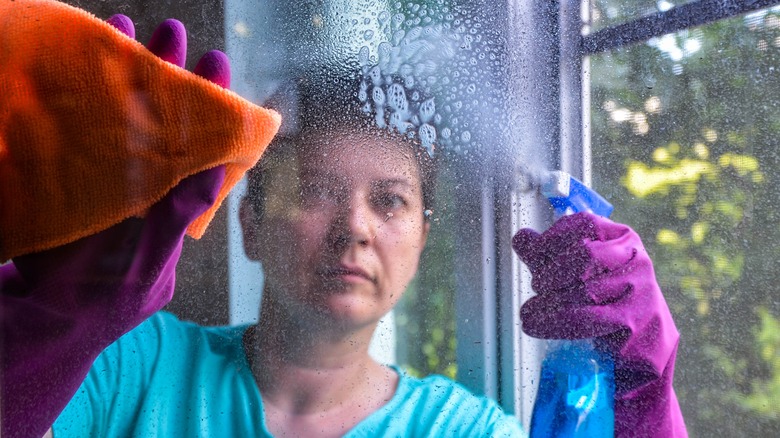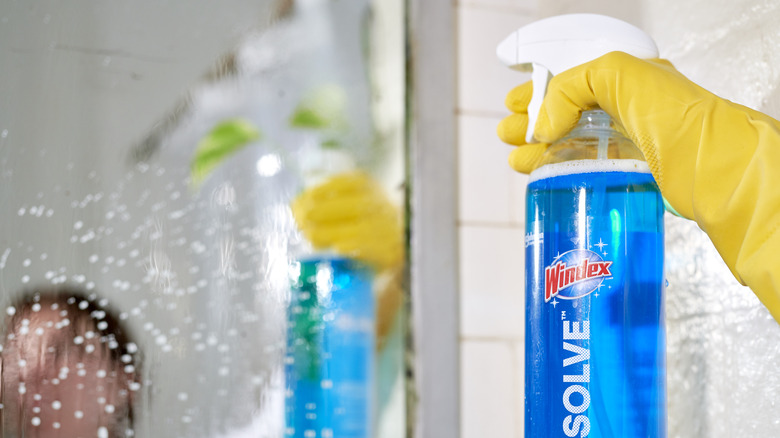What Happens If You Clean With Expired Windex?
With its electrifying neon blue appearance resembling a product hailing from a futuristic world of space-based cargo movers and robotic domestic help, Windex looks like it has the power to supply a streak-free finish until the end of time. Alas, the vibrantly hued glass cleaner is not immortal. However, this doesn't mean you should trash your bottle of Windex because it lacks a visible expiration date. You can still clean with older Windex, just don't expect it to provide maximum effectiveness.
In a perfect world, cleaning products would last forever. Instead, Windex's family of glass and hard-surface cleaners have a shelf life of 730 days. In other words, like many other multi-purpose cleaning sprays on the market, you have a good two years of the product working at its prime — provided you store it properly — before its efficacy begins to degrade. But old Windex can still work. Here's what to keep in mind.
What happens when you use expired Windex
Fortunately, using past-its-prime Windex won't harm the items you are cleaning. Your mirrors won't suddenly crack, nor will your bathroom countertops start to flake just because you spritz them with a bottle of Windex that wasn't freshly opened. The product will still do its job, though it may not do it as well as it would on the first day you purchased it. If you are cleaning with an older bottle of Windex, you may have to compensate by using more of the agent to boost its superpowers, regardless of whether you are using it for traditional cleaning jobs or in surprising ways, such as removing old wallpaper or loosening stuck zippers.
Additionally, keep in mind that once you open a bottle of Windex, the countdown to chemical breakdown commences. Exposure to air, moisture, and light causes the cleaner's active ingredients to deteriorate. To decrease the rate of this process, store opened and unopened bottles of Windex in climate-controlled areas away from direct sunlight, high humidity, and heat. Your best bet is to find a cool, dry cabinet or closet away from stoves, fireplaces, or hot pipes. Additionally, as convenient as it may be storage-wise, avoid keeping liquid cleaners like Windex in unattached garages as the cleaner's chemical ingredients are combustible when exposed to extreme heat. Likewise, the product can freeze when the mercury plummets which rapidly compromises its potency even after it thaws.
How to know if your Windex has expired
If your Windex bottle does not feature a printed expiration date – most don't – you can inquire with the store regarding shipment and stocking dates. Bottom line: The manufacturer lists Windex's shelf life as two years, but this period can be affected by exposure to the elements. To eliminate confusion regarding Windex's lifespan, simply use a permanent marker and write the date of purchase on the bottle prior to putting it away. Doing so will allow you to gauge its effectiveness over time.
Another option is to employ your senses. If you are wondering if you should still use the bottle of Windex that has been sitting under your kitchen sink for who-knows-how-long, take a good look at its color and texture. If you notice visible fading or discoloration or recognize changes in its consistency, it's best to get rid of it. Do the same if you take a whiff of your Windex and observe a foul odor.


